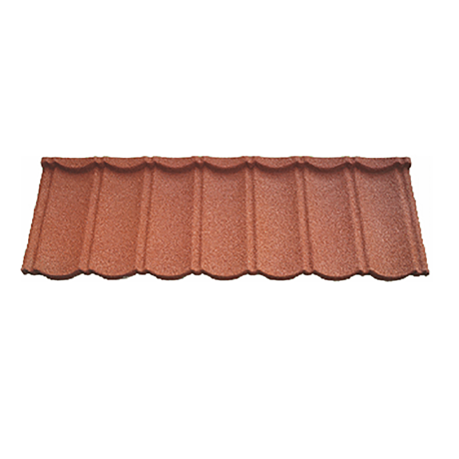
Dec . 25, 2024 23:58 Back to list
Exploring Various Styles of Shingles for Roofing Projects
Different Types of Shingles Roof A Comprehensive Overview
When it comes to roofing, shingles are one of the most popular choices due to their versatility, aesthetic appeal, and durability. The right type of shingle can enhance the look of your home, provide weather protection, and contribute to energy efficiency. Understanding the different types of shingles available can help homeowners make informed decisions that best fit their needs and preferences. Below is a comprehensive overview of the various types of shingles roofs, highlighting their unique characteristics, benefits, and potential drawbacks.
1. Asphalt Shingles
Asphalt shingles are the most common roofing material in North America, representing about 80% of residential roofs. They come in two primary types fiberglass and organic. Fiberglass shingles are made with a fiberglass mat encased in asphalt, while organic shingles utilize a paper mat saturated with asphalt.
Benefits Asphalt shingles are relatively affordable, easy to install, and available in a wide range of colors and styles. They typically last 15 to 30 years, depending on the quality and environmental conditions.
Drawbacks Despite their popularity, asphalt shingles can be prone to damage from high winds and UV exposure, which may lead to fading over time.
2. Wood Shingles and Shakes
Wood shingles and shakes provide a natural look that can enhance the character of any home. Shingles are machine-cut and have a smooth appearance, while shakes are hand-split and tend to be thicker and rougher.
Benefits These shingles offer excellent insulation properties and can last 30 to 50 years with proper maintenance. They are also environmentally friendly, being made from renewable resources like cedar, redwood, or pine.
Drawbacks Wood shingles are susceptible to rot, insect damage, and require regular maintenance, including cleaning and treatments to prevent mold and mildew.
3. Metal Roofing Shingles
Metal roofing is made from various materials, including steel, aluminum, and copper. These shingles can mimic the appearance of traditional shingles while providing the strength and durability of metal.
Benefits Metal roofs have a lifespan of 40 to 70 years and are resistant to extreme weather conditions, including fire and heavy snowfall. They are energy efficient as they reflect sunlight, reducing cooling costs.
Drawbacks The initial cost of metal roofing can be higher than that of asphalt or wood shingles. Additionally, they can be noisy during heavy rain or hail.
different types of shingles roof

4. Slate Shingles
Slate shingles are made from natural stone and are known for their elegance and longevity. They are available in a variety of colors and textures, enhancing the aesthetic appeal of any home.
Benefits Slate roofs can last over 100 years and are extremely durable, resistant to fire, water, and freeze-thaw cycles. They also offer excellent insulation properties.
Drawbacks The weight of slate shingles requires a reinforced roof structure, which can add to installation costs. They are also one of the more expensive roofing materials on the market.
5. Architectural Shingles
Architectural shingles, also known as dimensional or laminate shingles, are thicker than standard asphalt shingles and feature multiple layers, providing a three-dimensional appearance.
Benefits They offer enhanced durability, improved wind resistance, and a longer lifespan (up to 50 years) compared to traditional asphalt shingles. Their aesthetics can significantly elevate a home's curb appeal.
Drawbacks The cost is typically higher than standard asphalt shingles, and installation may be more complex due to the additional layers.
6. Solar Shingles
A newer innovation in roofing, solar shingles serve a dual purpose they protect your home while generating energy from the sun. Made from photovoltaic cells, these shingles are designed to blend in with traditional roofing materials.
Benefits Solar shingles can significantly reduce electricity bills and decrease your carbon footprint, making them an attractive option for environmentally conscious homeowners.
Drawbacks The upfront investment is high, and their efficiency may be affected by shading or less-than-ideal roof orientations.
Conclusion
Choosing the right type of shingles for your roof involves considering various factors, including budget, aesthetic preferences, and long-term maintenance. Each type of shingle offers unique benefits and drawbacks, so it's essential to weigh these when making your decision. By understanding the different options available, homeowners can select a roofing solution that not only protects their home but also enhances its overall value and appeal. Consulting with a professional roofing contractor can also provide valuable insights tailored to your specific circumstances.
-
Small Clay Roof Tiles for Durable & Stylish Roofing Red & Custom Options Available
NewsJun.24,2025
-
Lifetime Roof Shingles – Durable Roofing Solutions for Decades
NewsJun.10,2025
-
Top Roofing Shingles Types Compare Different Types of Architectural Roofing Shingles for Your Home
NewsJun.10,2025
-
Affordable Asphalt Shingle Roll Durable & Easy Flat Roof Solution
NewsJun.09,2025
-
Metal Asphalt Look Roofing Durable Shingle-Style Options
NewsJun.09,2025
-
Premium Clay Valley Roof Tiles Durable & Eco-Friendly
NewsJun.09,2025







